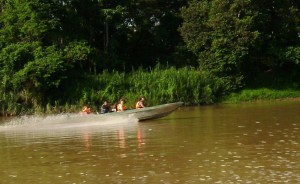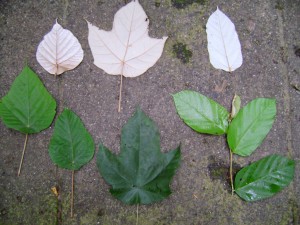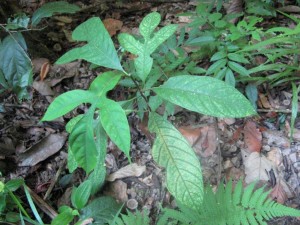Dr M is delighted to congratulate John Warren on his very recent promotion to a Chair in Botany at Aberystwyth University and to welcome him back here to present this guest blog on 21st century botany, it’s not all long beards, khaki shorts and Cyclanthaceous pith helmets…
“All field botanists know what it is like to feel completely overwhelmed trying to get to grips with the vast complexity of plant life. In fact most of us still regularly struggle to identify more challenging taxa that are not our specialities. What is more unusual is for a group of experienced professional botanists to be reminded of the total perplexment that is commonplace in the beginner. This is what can happen when you visit the rainforests of Borneo, some of the most biodiverse locations on earth.
September this year saw a group of final year undergraduate students from Aberystwyth University and four members of staff set off to spend two weeks trying to get to grips with the ecology of the riparian forests along the Kinabatangan River in Sabah. The Lower Kinabatangan Wildlife Sanctuary represents a narrow strip of forest that is hemmed in by vast oil palm plantations. Although the forest had been modified by the selective logging of virtually all the larger Dipterocarp trees it is still home to large numbers of impressive mega fauna such as Bornean elephants, orang-utans, proboscis monkeys and giant crocodiles.
These charismatic animals are the primary focus of a group of research scientists based at the Danau Girang Field Centre, which also hosted our botanical field course. The movements of the animals are well studied, but less research has been carried out on their impact on the relic forests which they inhabit. Over the next few years our task is to focus on the vegetation as we investigate seedling establishment rates. This question matters because it is entirely possible that subsequent generations of trees which are regenerating below the orangs and proboscis monkeys may not produce sufficient fruits to support these iconic species.
The tree flora of Borneo is well described and identifying adult trees is perfectly practical. Even so we were delighted to find that around Danau Girang there are permanent forest plots in which all the mature trees are labelled. The real fun begins when you want to record young trees and seedlings. The vast majority of tropical rainforest trees have simple glossy, lanceolate leaves with a pronounced drip tip. At first glance tropical tree saplings all look very similar. Vegetative keys have a special place in the affections of plant scientists. With more morphologically variable species and with lower levels of diversity, vegetative keys are not so intimidating. Our challenge in the riparian forests of the Kinabatangan was to develop a working vegetative key for the rather superficially similar tree saplings. Once we can routinely and consistently label the seedling morphotypes, their species will be determined by DNA barcoding both seedlings and known adult voucher trees.
That all sounded just about manageable. The week before flying out to Borneo, our intrepid team of undergraduates received intensive training on plant ID skills and learnt how to develop dichotomous keys using a challenging set of species that occur in Welsh grassland communities. However, even the complexity of the vegetative parts of sedges did little to prepare us for the morphological plasticity we would experience in Borneo. Take a look at these:
Pterospermum macrocarpum member of the Sterculiaceae. These are all leaves of the same species. From left to right, seeding leaves, the leaves from a suckering plant and on the far right, the leaves or a mature tree.
This is a wild relative of the breadfruit that we have not yet identified. Just look at the variety of leaf forms found on this one seedling plant. Now you know why we were baffled!
While the sapling trees were mind-blowingly complex in the variability of their leaves within a simple standard design, the adult trees presented us with an entirely different problem. Just how do you sample DNA and leaf samples from the high canopy? This is not a new problem. In the past tropical ecologists have resorted to ropes, rockets, long loppers and extreme climbing skills. We have a potential new solution that we are hoping to develop with our robotics department – drones! The plan is to return next year with remotely operated botanical drones that will be able to fly above the rainforest canopy and collect images and samples of plant material to help DNA barcode Borneo.
Botany truly is a 21st century science!”
Biographical note:
John Warren holds a Chair in Botany at Aberystwyth University and has an academic interest in the sex lives of plants and a recreational interest in all plants edible.
John writes a blog entitled “Pick of the Crop” which aims to amuse, entertain and educate by prying into the private lives of some of our most familiar foods, it’s the perfect accompaniment to discussion over a pint of beer, cup of coffee or slice of rhubarb crumble.





